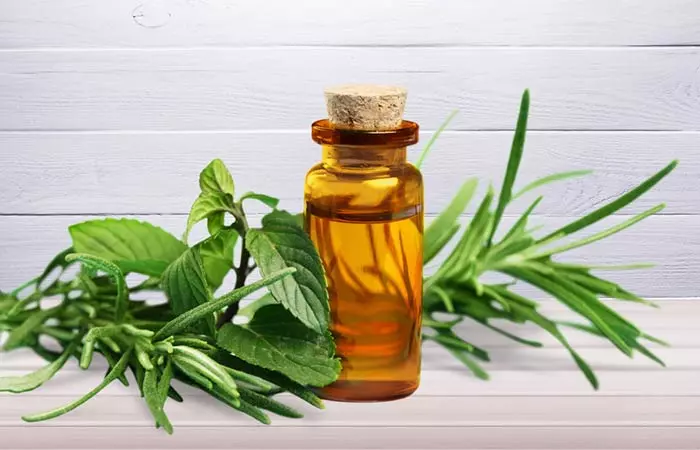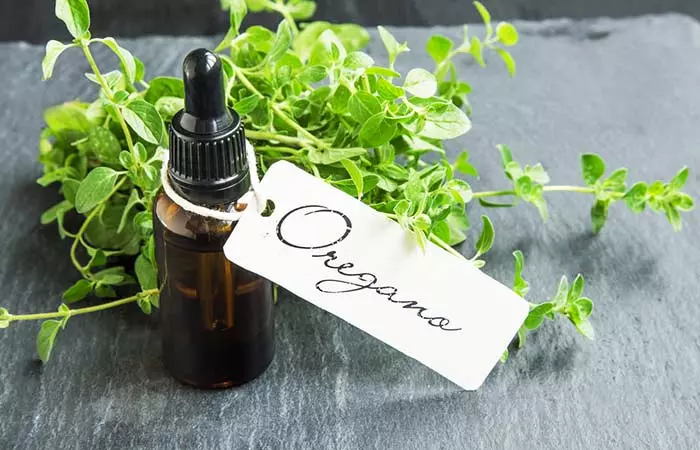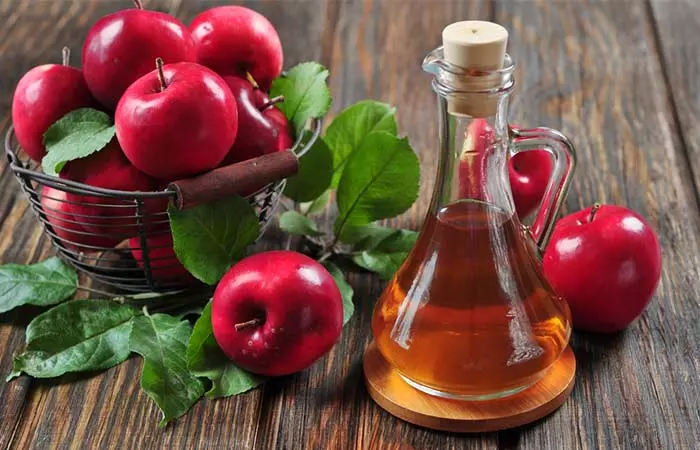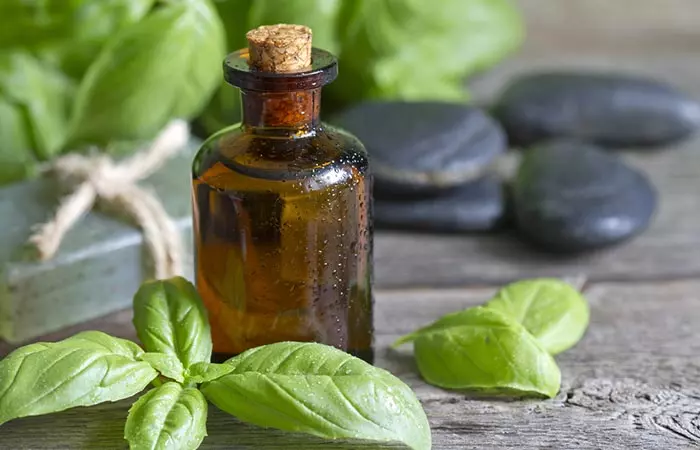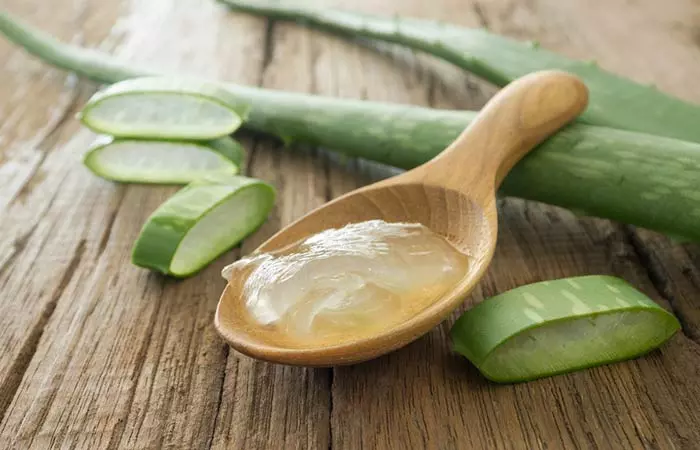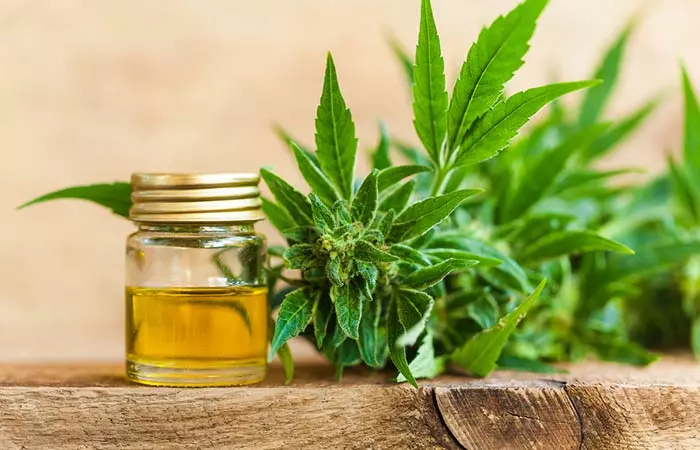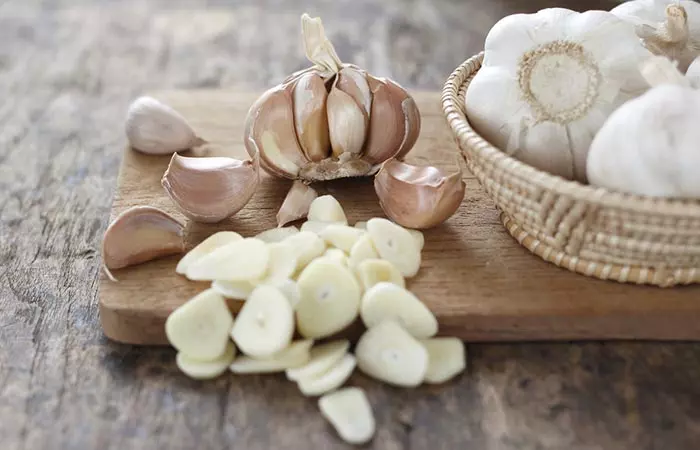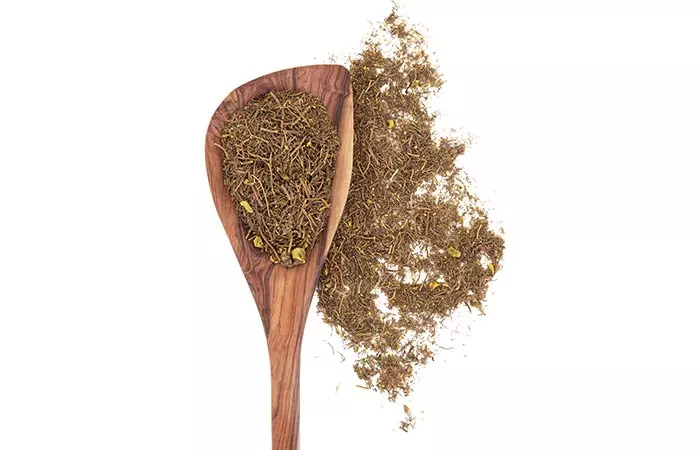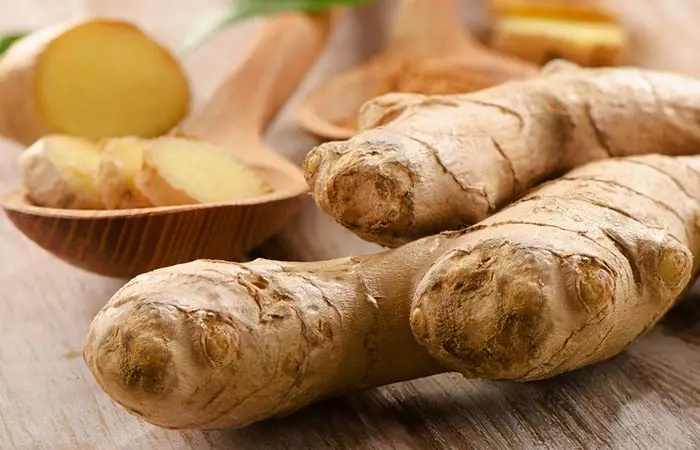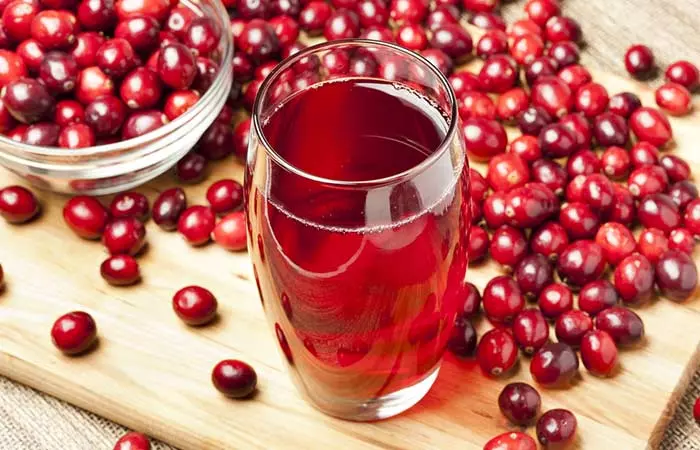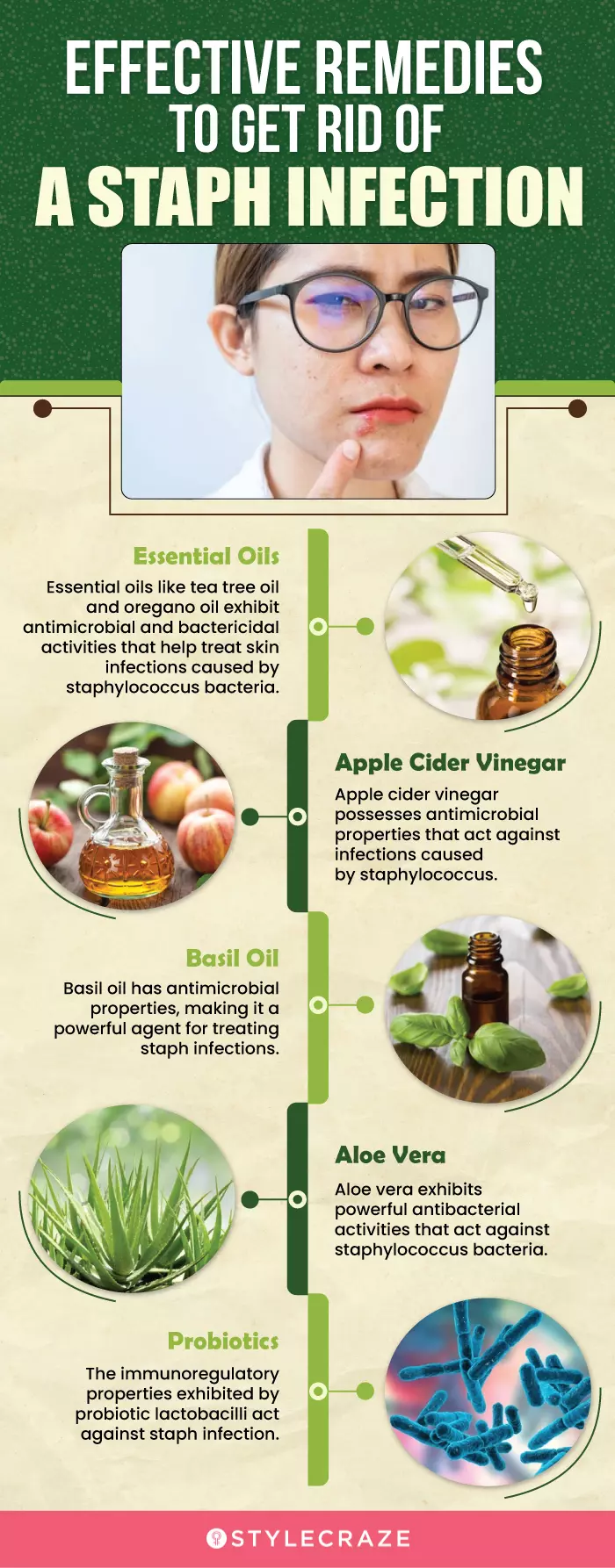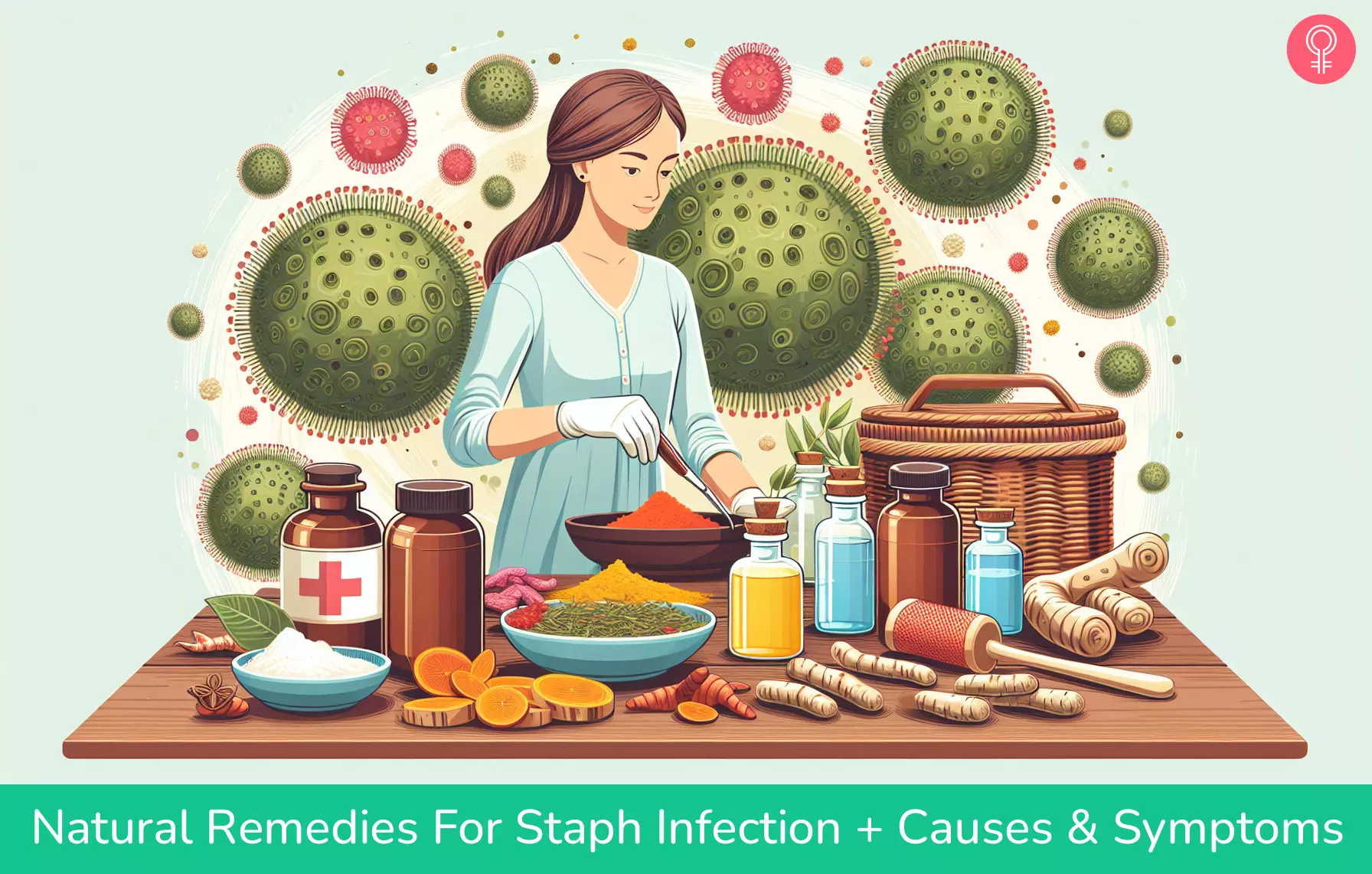Staphylococcus bacteria are generally not harmful. However, strains of staph, like MRSA, have antibiotic resistance and the infections can, in some cases, be deadly if they are not treated properly. In this article, we discuss staph infection in detail, how to treat the condition, and prevention tips. Read on to know more.
What Is A Staph Infection?
Staph infections are bacterial infections caused by different strains of the Staphylococcus bacteria. These bacteria are commonly found on the skin and inside the nose of healthy individuals. They hardly cause any issues most of the time, excluding some minor skin infections in some people. However, if the staph bacteria enter deeper into your body, the situation can turn deadly. They can invade your bloodstream, joints, bones, lungs, and heart. Of late, a growing number of otherwise healthy people have been developing lethal staph infections. A survey by CDC (Center for Disease Control and Prevention) found that more than 119,000 bloodstream staph infections were seen in 2017, out of which 20,000 people died. Furthermore, it was estimated in 2016 that every 1 in 10 serious staph infections developed in people who inject opioids. The signs and symptoms of a staph infection may vary depending on the type of infection it triggers.
Staph Infection – Types And Symptoms
The common skin infections triggered by the Staphylococcus bacteria are:
Boils – They usually develop as pockets of pus in the hair follicles or oil glands. The skin surrounding the infected area tends to look swollen and red. Impetigoi A bacterial skin illness that is infectious and causes pustules and yellow, crusty sores. It is caused by group A Streptococcus and Staphylococcus aureus. – It is a contagious infection characterized by painful rashes and large fluid-filled blisters that develop a honey-colored crust. Cellulitisi A condition in which the connective tissue present below skin gets inflamed and shows symptoms like redness. – This staph infection occurs in the deeper layers of the skin. It causes redness, swelling, and, in some cases, oozing ulcers on the skin. The good news is, you can treat cellulitis without antibiotics. Staphylococcal Scalded Skin Syndrome – Staphylococcus bacteria can produce toxins, which results in staphylococcal scalded skin syndrome. It is quite common in babies and children. This infection is characterized by fever, rashes, and blisters. In some cases, the topmost layer of the blistered skin may come off to reveal a raw surface that resembles a burn.
A staph infection may also trigger the following conditions:
Food Poisoning – One of the leading causes of food poisoning is staph bacteria. Its symptoms usually include nausea, vomiting, dehydration, diarrhea, and/or low blood pressure. Septicemiai Also known as blood infection by bacteria, it is the highest degree of response by the body to an infection. – This condition is also known as blood poisoning. It is caused as a result of staph bacteria entering a person’s bloodstream. The symptoms are fever and low blood pressure. Septicemia can also result in infections that affect the internal organs (like the brain, heart, or lungs), bones, muscles, and surgically implanted devices (like artificial joints). Toxic Shock Syndrome – This condition is also triggered by the toxins released by some strains of the Staphylococcus bacteria. It has been linked to certain kinds of tampons, surgery, and wounds. The symptoms of toxic shock syndrome are: High fever Vomiting Nausea Diarrhea Stomach pain Confusion Muscle aches Rashes on the palms or soles Septic Arthritis – It targets the knees, fingers, toes, hips, and shoulders. This type of arthritis is caused due to the invasion of the joints by infectious agents like staph bacteria. The symptoms of septic arthritis may include: Swelling in the joints Pain in the affected area Fever
Let us now understand the main cause of this infection.
What Causes Staph Infections?
As already discussed, staph infections are caused by Staphylococcus bacteria. Many people carry these bacteria without even realizing it. If you have developed a staph infection, there is a good chance that you have been carrying these microbes around for quite some time. These bacteria can easily spread from person to person and may also live long enough on inanimate utensils like towels or pillowcases to infect the next person who touches them. Dr. Peter Michael, MD, says, “Staph+bacteria can live on bedding for up to 1-2 weeks depending on the material and humidity.” Staphylococcus bacteria are known to be able to survive extreme temperatures and high levels of salt as well as stomach acid. If you have been diagnosed with a staph infection, your doctor may either put you on appropriate antibiotics or discuss other treatment options like wound drainage or removal of infected devices. Treatment often depends on the type of infection you are battling. Listed below are some all-natural remedies that can assist ongoing medication in managing staph infections.
11 Natural Remedies To Get Rid Of A Staph Infection
If you are looking for home remedies for a skin infection like staph, you are at the right place. Read on!
1. Essential Oils
a. Tea Tree Oil
The anti-inflammatory and antimicrobial activities of tea tree oil can help treat skin infections triggered by Staphylococcus bacteria. It works best as adjuvant therapy to existing treatments (3).
2-3 drops of tea tree oil 2 teaspoons of coconut oil (or any carrier oil)
You may do this once daily.
b. Oregano Oil
Oregano oil exhibits bactericidal activity on some strains of Staphylococcus bacteria and may be used to treat wound-associated skin infections (4).
2-3 drops of oregano oil 2 teaspoons of coconut oil (or any carrier oil)
You may do this once daily.
2. Apple Cider Vinegar
The antimicrobial properties of apple cider vinegar can help eliminate microbes like staphylococcus and can thus help in the treatment of infections triggered by them (5).
1 tablespoon of raw apple cider vinegar 1 cup of water
You can do this once daily. Avoid using this in case of toxic syndrome. Consult your doctor before using it.
3. Basil Oil
Basil oil shows a powerful inhibitory effect against microbes like Staphylococcus and may be a great option to treat staph infections (6).
2-3 drops of basil oil 2 teaspoons of any carrier oil
You may do this once daily.
4. Vitamins
Deficiency of vitamin D has been associated with an increased risk of methicillin-resistant Staphylococcus aureus (MRSA) nasal carriage (7). Vitamin C has an inhibitory effect on the bacteria (8). Hence, increasing the intake of foods rich in these vitamins like dairy products, citrus fruits, green leafy veggies, and egg yolks can help in battling staph infections. Talk to your doctor if you want to take additional supplements for these vitamins.
5. Aloe Vera
Aloe vera possesses antibacterial activities against Staphylococcus bacteria (9). These activities may be used to treat staph infections. 1 teaspoon of freshly extracted aloe vera gel You may do this once daily for best results.
6. Probiotics
Probiotic lactobacilli exhibit immunoregulatoryi A property or drug type used to regulate the immune response of the body by either elevating it or suppressing it. activities that can help in eliminating staphylococcus infections from within (10). Probiotic supplement Take any probiotic supplement daily. Make sure you consult a doctor before taking any additional supplements. You may take this once daily or as advised by your doctor.
7. CBD Oil
CBD oil exhibits antibacterial activities against many Staphylococcus bacterial strains and can thus be used in the treatment of staph infections (11). A few drops of CBD oil You may do this once daily or as directed by your physician.
8. Garlic
Garlic extracts enhance the antimicrobial activity of antibiotics used on methicillin-resistant strains of Staphylococcus aureus. Hence, garlic can work well as adjuvant therapy in treating staph infections (12). 2-3 garlic cloves You can do this once daily.
9. Goldenseal
Goldenseali A buttercup-family plant native to North America’s woodlands that is utilized in herbal medicine and has a vibrant yellow root. exhibits antimicrobial properties against methicillin-resistant Staphylococcus aureus and may thus be able to treat staph infections (13).
1 teaspoon of goldenseal tea 1 cup of hot water
You may take this concoction 1-2 times daily.
10. Ginger
Ginger exhibits antibacterial properties that may be used against bacterial infections caused by Staphylococcus bacteria (14).
1 inch of sliced ginger 1 cup of water
You may drink this 1-2 times daily. Note: You may also add a teaspoon of turmeric to this tea. The antibacterial effects of curcumin may help fight against staph infection (15).
11. Cranberry Juice
The antibacterial potential of cranberry juice can work wonders against staphylococcus infections (16). 1 ½ cups of cranberry juice Consume cranberry juice. You may drink this juice once daily. In addition to the above remedies, here are some tips that can help prevent the recurrence of staph infections.
How To Prevent A Staph Infection
Wash your hands with soap and water at regular intervals, especially after using the washroom and before eating. Keep the open wounds and cuts covered with bandages until they heal completely. Change your tampon every 4-8 hours to avoid staph infections like toxic shock syndrome. Do not share personal items like razors, towels, sheets, and clothing with others. Wash possibly infected clothing and bedding in hot water. Follow the necessary safety precautions while handling food. Refrigerate leftovers as soon as possible.
The remedies discussed above can work wonderfully in battling staphylococcus infections. However, you must avail medical intervention for such infections and use the home remedies only to assist ongoing medical treatments. Take a look at the next section for medical treatment options for staph infection.
Medical Treatment For Staph Infection
Medical treatment for a staph infection involves antibiotics and, in severe cases, draining the abscess. The treatment depends on the severity of the infection. Here are the medical treatments used for staph infection:
Antibiotics They are the first line of treatment for most staph infections. Methicillin-resistant staphylococcus aureus (MRSA) infections need specific antibiotics to combat them. Your doctor may give you an ointment, oral antibiotic, or even administer it intravenously to treat it. Wound Drainage If the infection has become an abscess, your doctor may make an incision and drain the infected liquid to speed up the healing process. Wound Care This involves keeping the affected area clean and properly bandaging it to prevent further infection and promote healing.
Hope you found this post helpful. Do you have any more queries related to staph infections? Get in touch with us through the comments section below. What are the long-term effects of untreated staph infections? If left untreated, staph infections can lead to serious complications like the spread of infection to other organs, chronic infections, and possible damage to tissues and organs. In severe cases, it can cause sepsis, a life-threatening condition. Can I shower with a staph infection? Dr. Michael says, “You can shower with a staph infection. Make sure to use soap and water on a cloth and gently clean the area. Do not reuse a cloth or towel, dry the area and apply a warm compress.” Is hydrogen peroxide good for staph infection? According to Dr. Michael, “Hydrogen peroxide can be effective in treating some forms of staph but only if applied directly to the infected area or wound as prescribed by your doctor.” What ointment is good for staph? Antibacterial ointments such as mupirocin (available as Bactroban) may help treat a staph infection. There are many easy remedies for impetigo. If there’s no improvement, it’s recommended that you consult a doctor. Is a staph infection itchy? Yes. A staph infection often leads to sores that are itchy, but not usually painful. Can you squeeze staph infection? No, it is not advisable to pop, pick or squeeze pus-filled sores caused due to a staph infection. Doing so may cause further infections, delay healing or spread the pathogens around. What ointment is good for staph? Antibacterial ointments such as mupirocin (available as Bactroban) may help treat a staph infection. If there’s no improvement, it’s recommended that you consult a doctor. Is rubbing alcohol good for staph infections? No. Rubbing alcohol shows antimicrobial properties and may be helpful as a disinfectanti Drugs or antimicrobial liquids that are on the surface of inanimate things to kill any living microorganisms there. against staph (17). There is, however, some contradictory evidence to suggest that it may not be as effective in reducing the viability of the bacteria (18). In addition, there is no evidence to suggest that rubbing alcohol can be used as a treatment for staph infections.
Illustration: Natural Remedies For Staph Infection + Causes & Symptoms
Learn the fastest way to cure a staph infection with 5 home remedies! Discover natural treatments to help you fight the infection and get back to feeling healthy.
